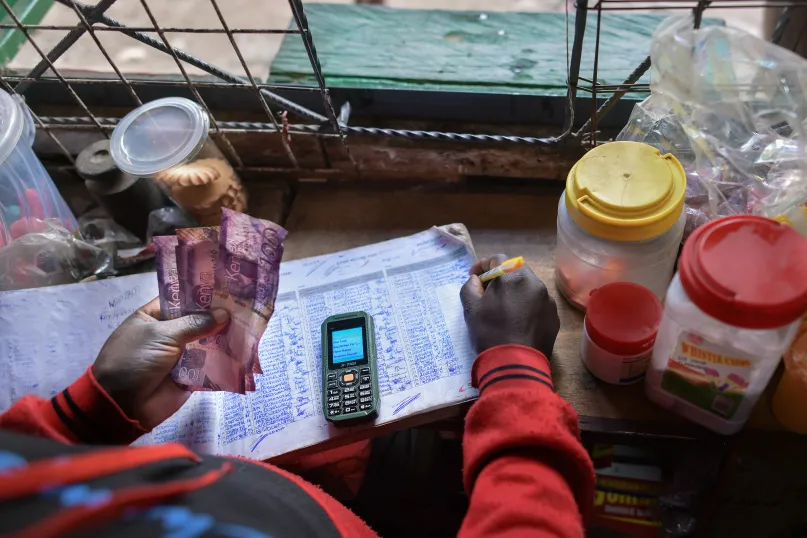Will Digital Currencies Be the Next Revolution in Financial Inclusion?

Technology is creating excitement about building a more inclusive digital economy. Mobile phones, digital payments service and digital identification systems have made it easier to reach those left behind by the traditional financial system. Will digital currencies be the next revolution in financial inclusion?
The evolution from Bitcoin to stablecoins to central bank digital currency
A digital currency or virtual currency has been defined by one global standards-setting body as a “digital representation of value that can be digitally traded and functions as (1) a medium of exchange; and/or (2) a unit of account; and/or (3) a store of value, but does not have legal tender status…in any jurisdiction.” Bitcoin may be one of the best-known examples of this new kind of digital asset. Since its launch in 2009, enthusiasts have hailed a future that would dispense with the need for banks or even cash. Users could instead send Bitcoins directly to each other electronically as payments, recording transactions in a shared or distributed ledger and securing them with cryptography.
Early versions of these “crypto assets” often experienced dramatic swings in prices, making them less suitable financial products for the poor. In response, innovators are designing new crypto assets called “stablecoins” that are supported by assets, such as a basket of hard currencies or other crypto assets, to protect their value. Central banks are likewise exploring whether they might issue their own stablecoins in the form of central bank digital currency, or CBDC.
Could the poor bank on stablecoins? If stablecoins or CBDC are meant to promote greater financial inclusion, we should first discuss both the opportunities and the risks. We should consider whether stablecoins will meet the needs of those who otherwise depend on cash and how it will improve on existing services like mobile or e-money. Let’s start with three questions.
Is it fast enough?
The first question is whether the technology supporting stablecoins will process transactions fast enough to meet most consumer’s daily needs. How long will a stablecoin payment take when you’re buying groceries? Existing mobile or e-money providers in low- and middle-income countries already process hundreds of payments per second, making electronic payments almost instantaneous. Bitcoin, in contrast, handles just three to seven transactions per second because of its complex encryption process. If consumers find stablecoin transactions take too long, they may prefer to stick with cash or their current e-money provider.
Do low-income consumers have the technology to access it?
A second question is whether low-income consumers have the right technology to use stablecoins or CBDC. Most applications for crypto assets today are designed with the more advanced messaging and computational power of smartphones in mind. Yet less expensive and more basic feature phones account for 60 percent of mobile phone connections in Sub-Saharan Africa and about half of connections in South Asia, the Middle East and Northern Africa.
If stablecoins or CBDC can’t be processed on a feature phone, it’s likely that the poorest consumers won’t be able to use them until the costs of smartphones fall or the capabilities of feature phones rise. Failing to address the technology gap could inadvertently make it harder for women to use stablecoins: women in low- and middle-income countries are 8 percent less likely to own a mobile phone and 20 percent less likely to own a smartphone than men.
How much does it cost to use?
A third question to explore concerns the cost of using stablecoins or CBDC for the poor. Remittances are one of the most promising use cases for crypto assets, since the cost of sending remittances remains relatively high at about 6.75 percent. However, even if a stablecoin issuer charges nothing in terms of transaction fees, migrant workers could face hidden costs when exchanging money to send funds home using a stablecoin.
If you’ve traveled internationally, you know that you often lose some value when exchanging money because banks buy foreign currency low and sell it high. If a stablecoin is not widely in use for everyday transactions, migrant workers sending funds home using a stablecoin may have to buy and sell currency at least twice: first when they exchange the funds they’ve earned abroad for a stablecoin, and again when their families exchange the stablecoin for their home country’s currency. The total costs associated with these multiple foreign exchange transactions could end up being higher than the current cost of sending a remittance using an existing money transfer service.
And more unknowns
Other important questions remain. If a stablecoin becomes widely accepted in a low- and middle-income country, how might regulators apply existing anti-money laundering or consumer funds protection regulations? If issuers require consumers to purchase stablecoins with a hard currency like the U.S. dollar or the euro, might central banks in low- and middle-income countries see their foreign exchange reserves dwindle, thereby constraining their ability to conduct monetary policy?
The largest unknown might be how consumers and especially the unbanked or underbanked will respond. No matter how well designed, digital currencies alone won’t solve other important challenges the poorest consumers face. The World Bank has found that 20 percent of unbanked adults cite their lack of appropriate identification documentation as a barrier to opening a financial account, a problem that is especially significant for women. People living in impoverished or rural areas may lack reliable network connectivity or electricity to depend on stablecoin payments in daily life. The most vulnerable members of some societies may lack sufficient literacy or numeracy, which could raise questions about the suitability of such services. Finally, marginalized populations may decline to enroll in financial accounts of any kind if they don’t trust providers or public authorities to protect them.
Innovation is welcome, dialogue is critical
Still, we should welcome innovators’ efforts to serve the needs of the poor. The mobile money revolution led to vast improvements in financial inclusion because innovators thought creatively about addressing the needs of the poor. Regulators contributed by remaining open-minded about who may provide basic financial services and how, while still honoring their responsibility to safeguard consumers and the financial system from harm. As interest in stablecoins and CBDC grows, let’s encourage innovators, regulators, and consumer advocates to engage in dialogue so that these emerging digital assets will help build a stronger and more resilient digital economy that serves the needs of all, including the poor.



With the emergence of Codid-19 pandemic, it has become obvious that digital finance is the future because it has made access to funds easier by reaching businesses with emergency liquidity at reduced costs and thus helping to improve the economy of developing countries. There are still a lot of challenges of understanding digital financial services I we are to gain financial inclusion because of the lack of skills, knowledge and IT infrastructure in developing countries but I still believe that if these challenges are resolved or managed well, then it is possible that digital currencies will soon be the next revolution to financial inclusion.
actually , it is interested article to discuss about it . In the meantime, we have to think about the ability of poor countries which doesn't have expiernece in digital currency .
most of local community here in Yemen , doesn't have enough expiernece in mobile money services or E-Money , and I think we have to increase their knowledge, expiernece about mobile money services once , after that the next steps should be taken is increasing the trust factor about mobile money services .personally , trust factor is the most important thing should be taken about mobile money services . In meantime, talking about bitcoin currency .I think it will take more time for Yemeni community to understand this digital currency as soon as they understand mobile money services and then it will be accept to use this digital currency .
Leave a comment